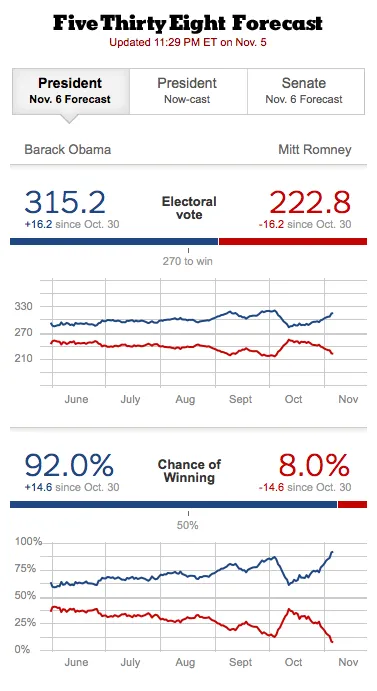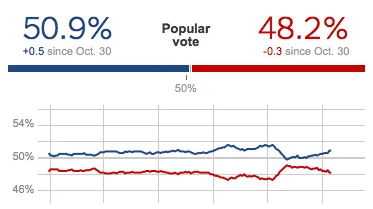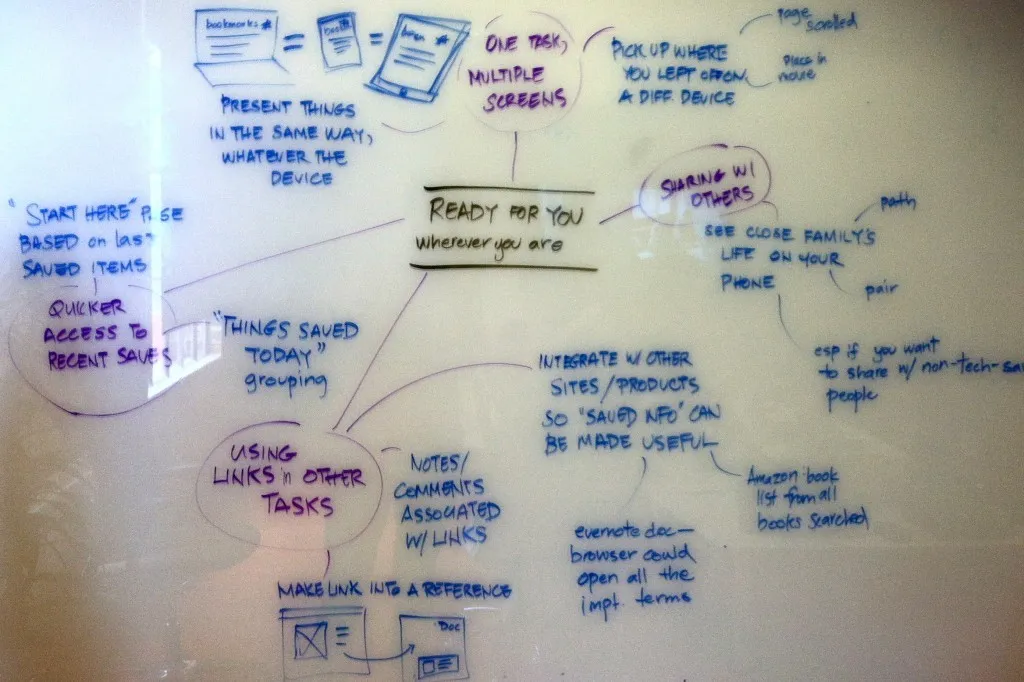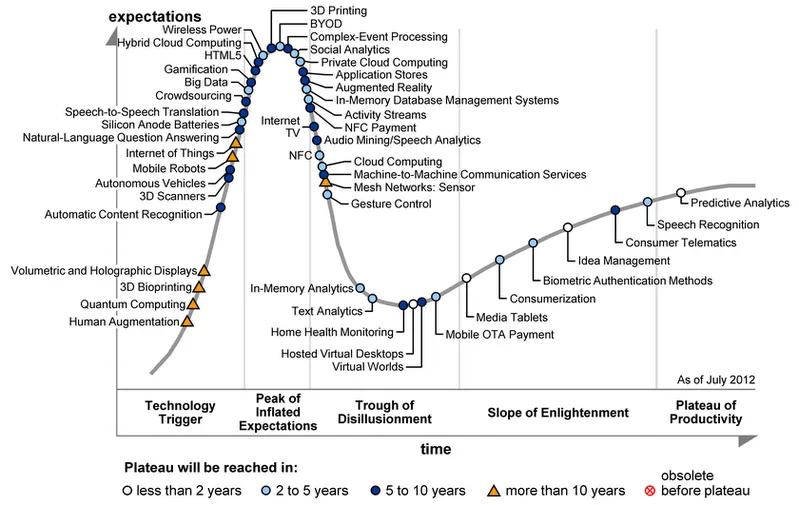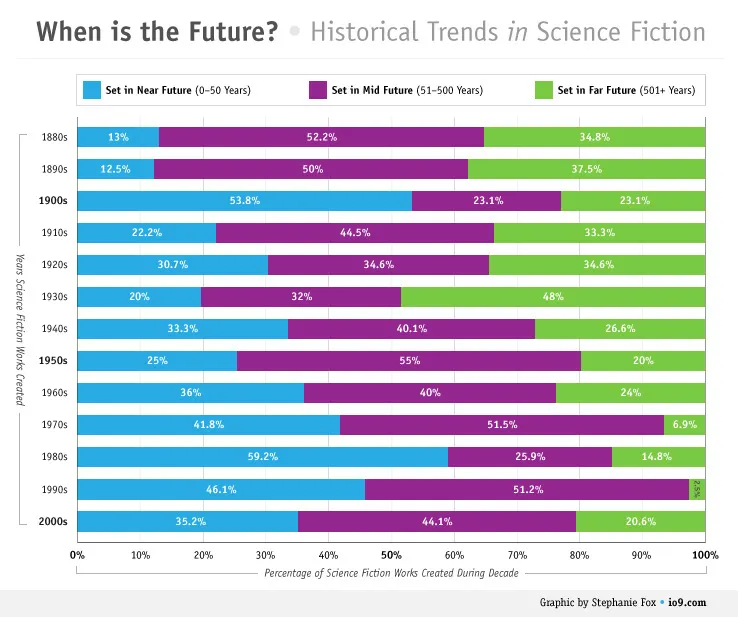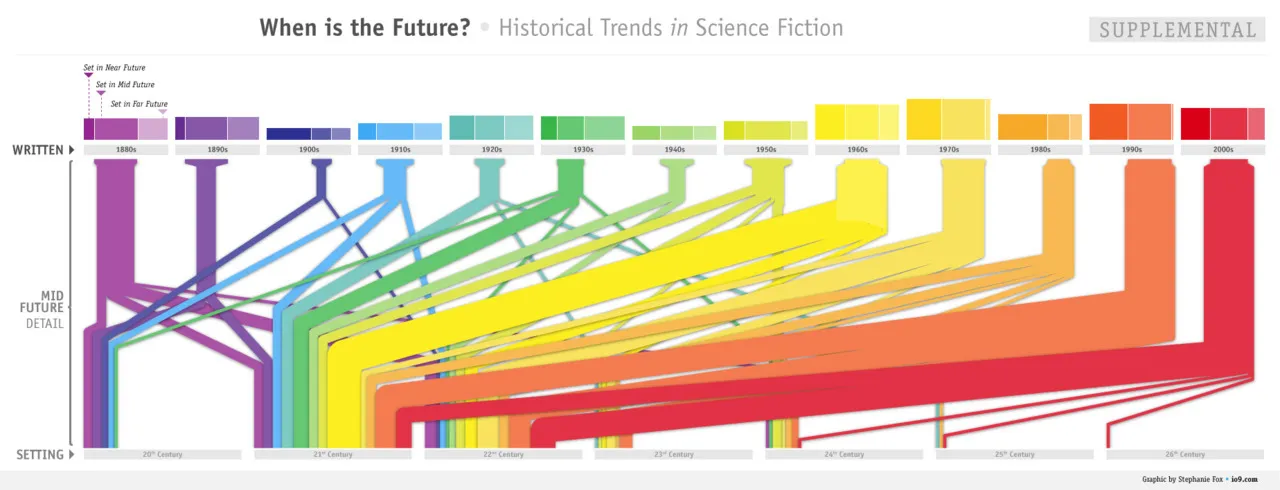io9 пишет об исследовании того, как изменялось представление о будущем в фантастике на протяжении десятилетий:
In general, the future got closer at the end of the twentieth century. You can see a gradual trend in this chart where after the 1940s, near-future SF grows in popularity. Again, this might reflect rapid technological change and the fact that SF entered mainstream popular culture.
The future is getting farther away from us right now. One of the only far-future narratives of the 1990s was Futurama. Then suddenly, in the 2000s, we saw a spike in far-future stories, many of them about posthuman, postsingular futures. It’s possible that during periods of extreme uncertainty about the future, as the 00s were in the wake of massive economic upheavals and 9/11, creators and audiences turn their eyes to the far future as a balm.
